Celebrate the Caribbean Endemic Bird Festival (CEBF) with us! Our theme in 2023 is “Water: Sustaining Bird Life” highlighting the importance of water conservation to both humans and birds. Have fun learning about a new endemic bird every day. We have colouring pages, puzzles, activities, and more. Download for free and enjoy nature with your family at home.
Endemic Bird of the Day: Cuban Martin
Cuban Martins (Progne cryptoleuca) are aerial insectivores. This group of birds gracefully swoops and soars through the air, catching insects on the wing. They have long and pointed wings that help them perform their aerial acrobatics. They also tend to have wide beaks that enable them to scoop insects as they fly. This group includes potoos, nightjars, swifts, swallows, and flycatchers.
Cuban Martins are striking birds. The adult male is bright metallic blue all over with a purplish gloss; some hidden white feathers on the lower belly are not usually seen in the field. The female has a white belly that contrasts sharply with a sooty-brown chest, sides, throat, and upper-parts, with some steel-blue feathers on her back, scapulars, and part of the head. Both sexes have forked tails. First-year juveniles are similar to the adult female, but much duller, and their tails are less forked than those of adults.
Cuban Martins are quite similar to Purple Martins (Progne subis). In fact, males of both species are indistinguishable in the field! However, females can be differentiated as the Purple Martin has some brown streaking on the underpart and a less distinct border between a darker breast and whitish belly.
The calls of the Cuban Martin include a harsh “churr,” a high-pitched, buzzy “zwick-zwick,” like a vibrating wire; and also a strong melodious warble.
Being a migratory species, the Cuban Martin’s range includes breeding, passage and wintering areas. It breeds only in Cuba with records on the main island, the Isle of Youth, and several cays both north and south of the island. The migration route and wintering range is largely unknown, but it is believed to winter in South America since the Cuban Martin is rarely reported in the rest of the Caribbean. This hypothesis is supported by recent data from an individual breeding in Cuba that was fitted with a geo-locator tag; it had traveled to Brazil for the winter!
The few records of the Cuban Martin in the region include observations in the Cayman Islands, Dominican Republic, Puerto Rico, Guadeloupe, Barbados, Aruba, and Curacao.
The Cuban Martin inhabits open or semi-open areas in palm groves, mangroves, grasslands, agricultural lands, low scrubland, and coastal lagoons. They are also common in cities and towns where they can be observed perched on power and telephone lines. They return to Cuba to breed starting in late January with most of the population arriving between mid-February and early March. They begin to depart for their wintering area by late September/early October and are not seen again until the next breeding season.
Cuban Martins nest in colonies, but may breed in isolated pairs. The female lays 3 to 5 white eggs in abandoned woodpecker nests, dead palms, and cavities in cliffs and caves. They also nest under bridges and in old buildings and church towers. In Cuba, the largest breeding colony recorded is in the Convent of San Francisco de Asis in Old Havana. The few studies related to cavity use and breeding phenology are concentrated in that colony.
Cuban Martins are well adapted to capturing airborne insects. Their short, wide bill acts as a funnel to capture prey during flight, as they alternate between flapping and gliding. The diet, although not described in detail, includes known prey such as beetles, dragonflies and damselflies, butterflies and moths and bees. Both males and females feed the chicks in the nest, and even when the chicks leave the nest, both parents have been observed transferring food to the young during flight.
There is currently no reliable population estimate for this species. However, it is considered common throughout its breeding range in Cuba, and the population is assumed to be stable. It is therefore listed by BirdLife International as Least Concern. However, there are records of declines in local populations at some sites in the Ciénaga de Zapata, Cuba due to the loss of nesting cavities. This is likely related to habitat destruction by poachers, who cut down nesting trees in search of psittacine (parrot) nests. The impact of other possible threats such as invasive species, hunting, collisions, and human disturbance is generally unknown. Learn more about this species, including its range, photos, and calls here.
Thanks to Alieny González Alfonso for the text!
Colour in the Cuban Martin
Download our West Indies Endemic Bird colouring page. Use the photos below as your guide, or you can look up pictures of the bird online or in a bird field guide if you have one. Share your coloured-in page with us by posting it online and tagging us @BirdsCaribbean #CEBFfromthenest
Listen to the calls of the Cuban Martin
The calls of the Cuban Martin include a harsh “churr,” a buzzy “zwick-zwick,” as well as other musically burbling, buzzy notes.
Puzzle of the Day
Click on the image below to do the puzzle. You can make the puzzle as easy or as hard as you like – for example, 6, 8, or 12 pieces for young children, all the way up to 1,024 pieces for those that are up for a challenge!
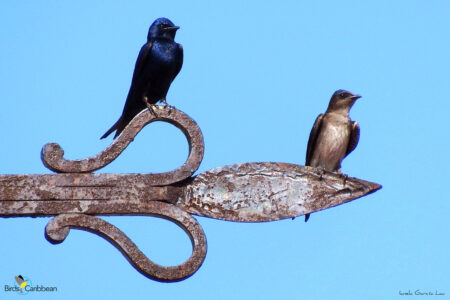
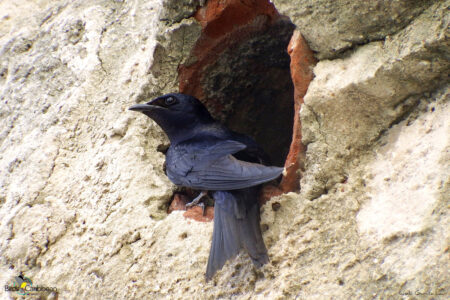
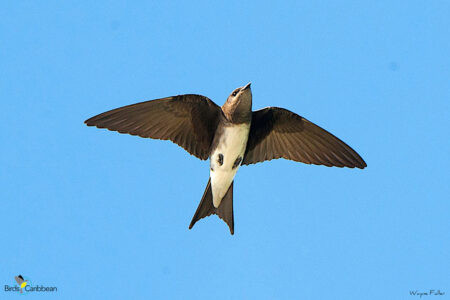
Activity of the Day
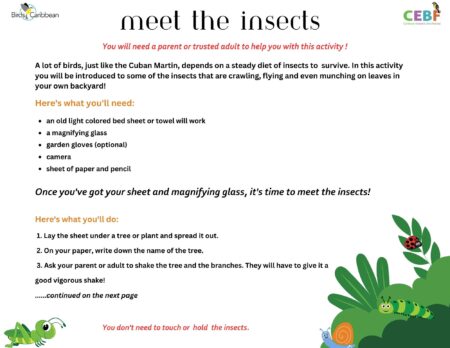 FOR KIDS: Cuban Martins depend on insects as there main food source! This is true for lots of birds who need insects to survive. Even those who eat nectar or fruits might sometimes also eat insects or will catch them to feed to their hungry growing chicks (who need protein to be able to grow their feathers).
FOR KIDS: Cuban Martins depend on insects as there main food source! This is true for lots of birds who need insects to survive. Even those who eat nectar or fruits might sometimes also eat insects or will catch them to feed to their hungry growing chicks (who need protein to be able to grow their feathers).
So, why not find out more about which insects live near you that are providing important food for birds? In this activity you will need:
- an old light colored bed sheet or towel will work
- a magnifying glass
- garden gloves (optional)
- camera
- sheet of paper and pencil
You will also need a parent or trusted adult to help you with this activity. Download the activity instruction sheet here. And then you are ready to go looking for insects—who knows what you might find !
FOR KIDS AND ADULTS: Enjoy this video of a Cuban Martin at a nest at the top of an old church in Old Havana – you can see a female trying to get her fully-grown chick to leave the nest!
Want to know more about other wonderful and acrobatic ‘Aerial Insectivores’ that live in the Greater Antilles? Then check our this fun blog post by Justin Proctor!

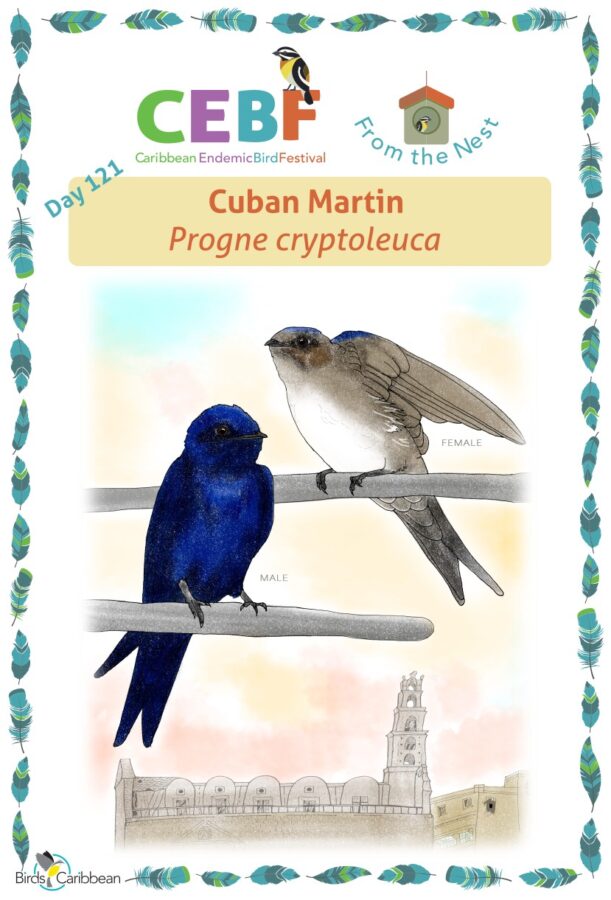
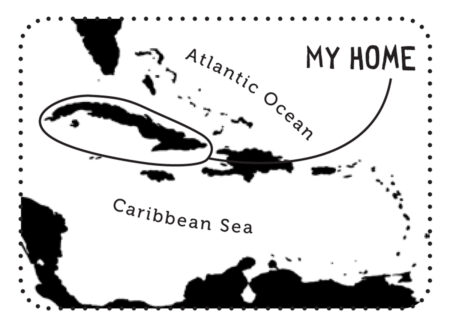
One comment
Comments are closed.